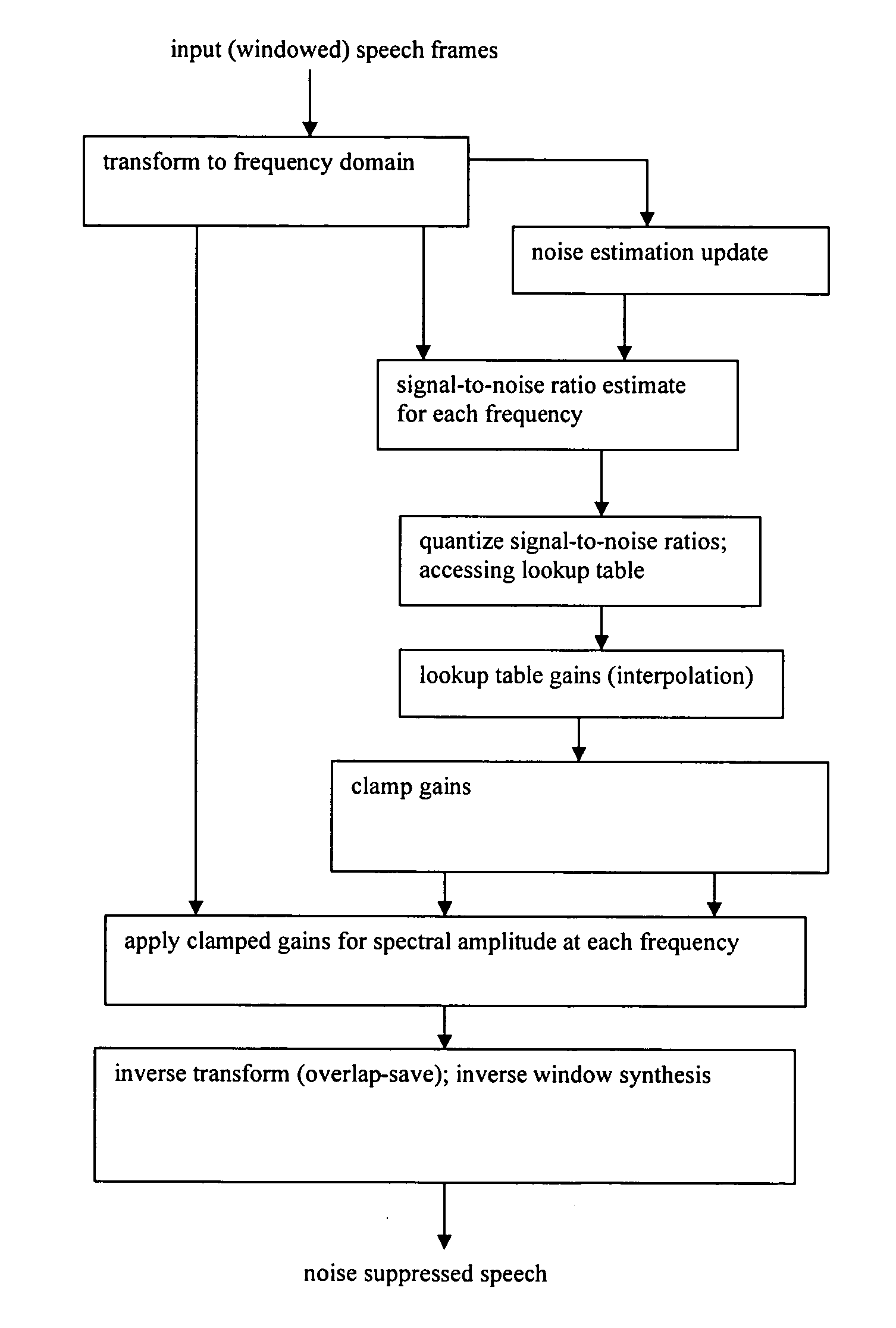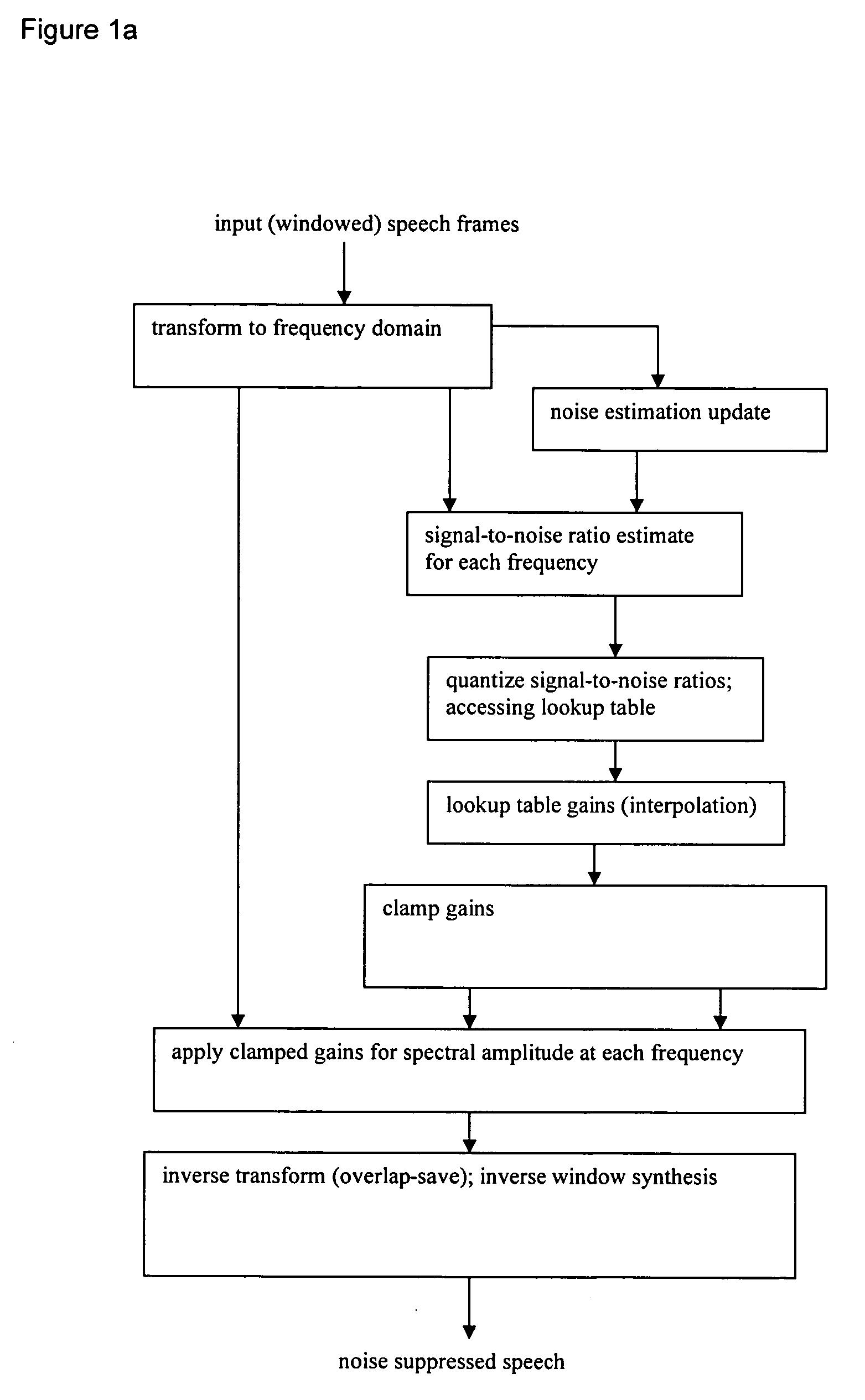Noise suppression
a technology of noise suppression and signal processing, applied in the field of digital signal processing, can solve the problems of insufficient application for many applications, and achieve the effect of low computational complexity and good performan
- Summary
- Abstract
- Description
- Claims
- Application Information
AI Technical Summary
Benefits of technology
Problems solved by technology
Method used
Image
Examples
embodiment noise
2. First Preferred Embodiment Noise Suppression
[0014] First preferred embodiment methods of noise suppression (speech enhancement) use a frequency-dependent gain determined from estimated SNR by training data with a minimum mean-square error metric. In particular, presume a digital sampled speech signal, s(n), is distorted by additive background noise signal, w(n); then the observed noisy speech signal, y(n), can be written as:
y(n)=s(n)+w(n)
The signals are partitioned into frames (either windowed with overlap or non-windowed without overlap). Initially consider the simple case of N-point FFT transforms; following sections will include gain interpolations, smoothing over time, gain clamping, and alternative transforms.
[0015] N-point FFT input consists of M samples from the current frame and L samples from the previous frame where M+L=N. L samples will be used for overlap-and-add in the end.
Y(k, r)=S(k, r)+W(k, r)
where Y(k, r), S(k, r), and W(k, r) are the (complex) spectra of ...
PUM
 Login to View More
Login to View More Abstract
Description
Claims
Application Information
 Login to View More
Login to View More - R&D
- Intellectual Property
- Life Sciences
- Materials
- Tech Scout
- Unparalleled Data Quality
- Higher Quality Content
- 60% Fewer Hallucinations
Browse by: Latest US Patents, China's latest patents, Technical Efficacy Thesaurus, Application Domain, Technology Topic, Popular Technical Reports.
© 2025 PatSnap. All rights reserved.Legal|Privacy policy|Modern Slavery Act Transparency Statement|Sitemap|About US| Contact US: help@patsnap.com



